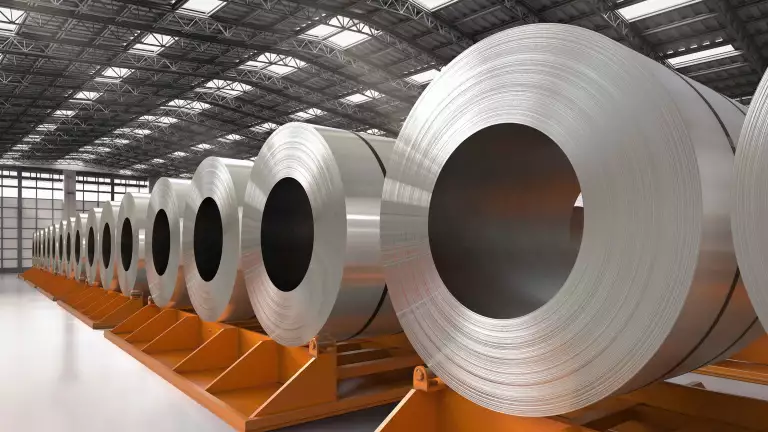Right now, the US is preparing to expand a 25% tariff to a wider range of imported steel and aluminum products while also eliminating exemptions for all countries and importers, without exception.
The Trump administration announced the impending tariffs on February 10 on the grounds of national security. They would newly apply to key trading partners, such as the EU and Canada, that so far have been excluded from duties or subject to quotas since the tariffs were first imposed in 2018. US manufacturers and other importers will no longer have recourse to individual exclusions.
The new tariffs go into effect on March 12. They will apply to a range of products, including steel, aluminum, and certain “derivatives” containing the metals that will be taxed based on their steel and aluminum content.
The So What
The new tariffs would have a far-reaching impact on manufacturing costs and supply chains across a range of industries in the US and exporting nations. Current US tariffs will extend to Argentina, Australia, Brazil, Canada, the EU, Japan, Mexico, South Korea, and the UK, which together account for around three-quarters of US steel imports by volume.
“Steel and aluminum producers and customers must move swiftly to understand what these tariffs will mean to them and how they can mitigate any negative impact,” says Nicole Voigt, a BCG managing director and partner who co-leads the firm’s work in metals.
If implemented as announced, BCG projects that, once everything is priced in, the new steel and aluminum tariffs would:
- Add $22.4 billion to the cost of steel and aluminum products the US imports and up to an additional $29 billion for derivative products.
- Increase the affected amount of imported steel from 7 million metric tons to 26 million. With the expansion to “derivative” products, such as elevator parts, bulldozer blades, lamps, and structural steel, the value of goods being tariffed could more than double to $72 billion.
- Increase the affected amount of imported aluminum from 2.3 million metric tons to 5.3 million. When derivative products like baseball bats and some aircraft and kitchen appliance parts are included, the value of goods being tariffed would reach $132 billion.
- Most heavily affect the US metals manufacturing industry, the biggest user of imported steel and aluminum (24% and 35% import dependence respectively). The automotive, mechanical machinery, construction industries, and various consumer sectors will also be significantly impacted.
- Boost prices and profit margins for US steel and aluminum manufacturers.
“Many companies are already starting to update their pricing and optimize their inventory and supply chains, ” says Janice Lee, who co-leads BCG’s global work in metals. “Others are discussing potential capacity expansion.”
These estimates don’t account for retaliatory actions taken by US trading partners and counter measures the US may take in response. The EU and Canada have indicated they will retaliate against US exports but have not yet released details.
Further trade actions may come. For instance, the February 10 executive order provides a mechanism for US steel and aluminum producers and industry associations to seek extending the tariffs to even more derivative goods containing steel or aluminum.
Unlike the tariffs imposed in President Trump’s first term, moreover, US steel and aluminum customers will have limited ways to avoid paying the duties. The US has granted more than 100,000 individual exclusions since 2018 to importers that demonstrate limited domestic availability of specific steel and aluminum products. That system for granting or renewing exclusions is now shut.
The Trump administration is taking a different approach to steel and aluminum tariffs than it did in 2018.
“This time, there is less dealmaking with countries and no room for companies to get exceptions,” says Iacob Koch-Weser, a BCG associate director who specializes in trade and investment.
“The main options are to source domestically or pay more for imported materials. Shifting sourcing locations is less useful if everyone faces the same tariffs.”
Subscribe to receive BCG insights on the most pressing issues facing international business.
Now What
The key issues and options facing business leaders largely depend on their place in the value chain.
US steel and aluminum companies in the short term will need to manage change in demand through pricing and adjusting production and inventory. Over the longer term, they should determine whether to invest in more capacity, explore making higher value-added products that have primarily been imported thus far, and improve operational efficiency to remain competitive.
US steel and aluminum customers must immediately calculate the tariffs’ impact on their material costs and their prices. They should identify ways to mitigate impact, such as by documenting their products’ metals content to qualify for lower tariffs, renegotiating with current metals suppliers, shifting to other suppliers, or using alternative materials.
Exporters of steel and aluminum products to the US should determine whether they can remain cost-competitive in this market, and in which segments. Without the exemptions that existed previously, exporters will need to reassess the competitive landscape. They can also consider diversifying exports to other regions to offset revenue lost in the US.




